Health and Fitness Tips to Drive You to Reach Your Goals
With the right guidance and resources, you will learn to trust yourself and make positive changes a part of your daily routine. Learn more about health and wellness in my articles.
Flood, Fire and Mold Remediation on Kauai
With the right guidance and resources, you will learn to trust yourself and make positive changes a part of your daily routine. Learn more about health and wellness in my articles.
Aloha!
When we talk about a sewage flood, we mean “black water,” or category 3 from the The Institute of Inspection, Cleaning and Restoration Certification (IICRC):
• Category 1. This is liquid from a clean and sanitary source, such as faucets, toilet tanks, drinking fountains, etc. But, category one can quickly degrade into category two.
• Category 2. This category of liquid used to be called grey water, and is described as having a level of contaminates that may cause illness or discomfort if ingested. Sources include dishwasher or washing machine overflows, flush from sink drains, and toilet overflow with some urine but not feces.
• Category 3. This is the worst classification and is grossly unsanitary. It could cause severe illness or death if ingested. It used to be called black water, and sources include sewer backup, flooding from rivers or streams, toilet overflow with feces, and stagnant liquid that has begun to support bacterial growth.
This is a worst-case scenario for homeowners – a clogged pipe causing a sewage backup; the category 3 water can flood from any connected pipe and contaminated water might flow over bare floors and carpeting, touching furniture and other possessions on the floor. Yuck. What do you do?
Don’t walk in it! While that may seem obvious, the majority of people with a sewage flood begin moving furniture and gathering their possessions while tracking sewage into unaffected areas of the house. This creates unsanitary conditions in even more places in your home – let The Professionals take care of your furniture.
Call The Professionals – Rescue Services! 24/7/365 (808) 246-0405 – we are here for you. We are trained to deal with sewage, and have the proper equipment to sanitize your home and make it safe for your family. In an emergency, we can usually begin cleanup in an hour.
Call your insurance company! Open a claim, and let them know The Professionals are on the way to clean up the mess. Ask your agent if your insurance policy covers the cost of a hotel during the cleanup period.
Call a drain cleaning service! The origin of the flood will need to be determined and fixed. On Kauai, we use Wayne’s Drain Cleaning Service (808) 742-6732.
Insurance coverage differs depending upon the origin of the sewage. If it comes from within the house it is normally covered; if it is from an outside source, maybe a backed up cesspool, it may not be covered. Prevention is a great way to never experience a sewage backup – maintain your cesspool and have your drains snaked by a professional to remove any buildup (if you’re in a condo, ask your homeowners association).
The most common drain backup is in a multi-story house, especially if it is an older property with cast iron pipes. The most common components of a clog are rice, pasta, and dental floss – be aware of what is going down your drains and toilet, and use the trash can for all food products and non-biodegradable materials.
The Professionals – Rescue Services team is trained to deal with the biological hazards of a sewage flood, sanitize your home, and make it safe for your family – and we’ll do it as quickly as possible. With over 25 years serving our neighbors of Kauai, know that we have the experience to help you in any homeowner emergency.
The Professionals – Rescue Services has been serving the entire island of Kauai for over 25 years. If you encounter any situation that calls for non-medical emergency service and don’t know who to call – call us at 808-246-0405 – 24/7.

You arrive home after a beautiful sunset at the beach only to discover your refrigerator supply line has broken, and water has been running onto your kitchen floor for hours. Your kitchen floor is tile, so you don’t worry too much as you shut off the water valve – until you notice the water has run onto your hardwood flooring in the dining room, the carpeting in the living room, and has begun to wick up the drywall. This is typical household water damage – water heaters, ice maker lines, toilet supply lines, sinks – not the floods and hurricanes people imagine would cause the most harm.
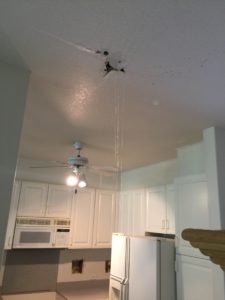 Water Damage – watch the video
Water Damage – watch the video
Stopping the water source is the first step to recovery, and the next step is immediately calling a water damage mitigation company. Mitigation is defined as the act of making a condition or consequence less severe. The sooner your home is dry, the better the damage prevention.
If the excess water is removed by vacuum and high-powered fans are strategically placed to cover every damp area as soon as possible, that may be the end of your problem – after a couple days of drying, your home may be back to it’s former condition. But what if you tried to clean up the water yourself with a shop vac and a floor fan? Or simply waited until your insurance agent was in the office the next day to answer your questions about what to do? You’d soon discover the secondary damage, and no mitigation has taken place.
Secondary damage comes in many forms – it can be the mold growth that occurs when even a small amount of water is left in your floors, walls or carpets; it can also be the buckling of your hardwood floor. Which scenario is easier – removing all traces of water after a leak by having several fans in your home after a technician has sucked up the water, or the parade of contractors replacing your floors, carpets, and drywall a few weeks after the water leak which wasn’t properly dried? The answer is simple.
The Professionals – Rescue Services will respond to your emergency phone call within the hour – day or night – anywhere on Kauai. We have the knowledge and equipment to dry your home to industry standards and mitigate further damage. We are experts in homeowners insurance and our team can assist you with the entire claim process, and directly bill your insurance company for your loss. We make it as easy as possible for you.
You may still need some work done on your home, as in the above picture and video, but our technology gives you the best chance for saving other areas.

Our services for water damage mitigation are nearly always covered by your insurance. Secondary damage, caused by not properly drying your home after a water leak, is not covered by your insurance. That makes it simple to decide what to do when you return home to an overflowing toilet or broken pipe – call The Professionals – immediately.
The Professionals is the preferred mitigation company on Kauai for insurance companies such as HIG, First Insurance, State Farm, Dongbu, and more. We have worked closely with the insurance adjusters over the years and have a relationship which benefits you, the homeowner. Call us when you have a non-medical emergency – we are here to help.
Our next blog post will cover some insurance basics, and the differences between homeowners insurance and condo association insurance. Sign up for our blog so you don’t miss this great information.
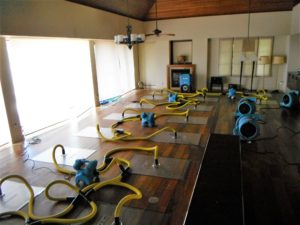
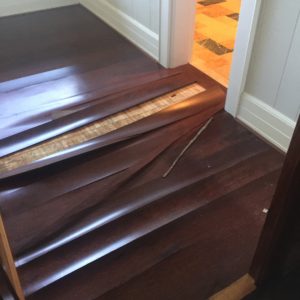
The Professionals – Rescue Services is here to help you in any emergency – from hurricane cleanup to a wet floor from a broken water line to smoke mitigation from a fire, and so much more. If you encounter any situation that calls for non-medical emergency service and don’t know who to call – call us at 808-246-0405 – 24/7. We are here to help the entire island of Kauai.

People often ask how they can detect mold in their homes when it normally grows in places where it can’t be seen. “Mold Detectors” don’t exist as a household tool, but if moisture is present you can be almost certain mold is growing somewhere out of sight.
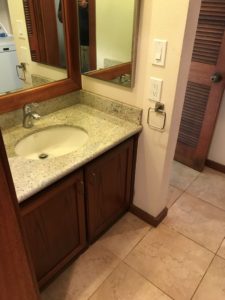
In the photo above, a small bit of mold was showing at the edge of the bathroom vanity. Removing the vanity revealed the full extent of the mold growth.


Mold requires three things to grow: food, water, and the correct environmental conditions. Kauai provides the perfect temperature and humidity, and the construction materials in your home provide the food, so the best way to prevent mold is by removing any water source. Small leaks provide enough moisture to begin and sustain growth, while large leaks which have not been properly dried can cause mold to quickly take over entire sections of drywall or carpeting.
Rescue Services uses infrared cameras to detect moisture under carpeting and in drywall. What is undetectable to sight or touch will show up as temperature gradients on an infrared display. The following picture shows a hallway thought to be dried completely after a water pipe leak.
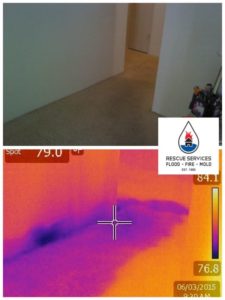
This picture clearly shows that the water was not sufficiently removed and has begun to wick up the drywall. These are the perfect conditions for mold growth.
What do you do if you find mold in your home? It needs to be removed before it begins to affect your health, and the first step in the process is eliminating the water source. Rescue Services offers free consultations by a qualified technician to detect water. After pinpointing the most heavily damaged section, the dark purple in the infrared picture above, the source can usually be found and assessed. Removing mold before moisture is removed will only lead to further growth.
When the water source is gone, the mold needs to be removed, and this is best done by a professional as well. Rescue Services uses the Five Principles of Mold Remediation from The Institute of Inspection, Cleaning and Restoration Certification (IICRC), an organization that sets industry standards for water damage recovery.
1. All mold remediation workers and any others who enter the structure must follow proper practices to avoid inhalation and/or unprotected physical contact with toxic mold.
2. Before remediation begins, an assessment of the extent of damage in the structure should be made by a qualified expert. A written plan outlining each step of the proposed remediation should be provided to the homeowner or property owner.
3. Control is the first priority. Before mold removal, steps should be directed toward preventing further spread through the air or by other means of active mold that is already growing.
4. Growing mold must be completely physically removed. Isolating mold or cosmetic removal of surface growth alone is inadequate. “Household” methods of mold removal such as simply applying common chlorine bleach are not effective.
5. Preventive measures to prevent re-contamination should be encouraged post-remediation. Sources of chronic indoor moisture must be identified and remedied.
Rescue Services uses negative pressure to contain any mold spores, preventing contamination to any other parts of the home. Most homeowners do not have the means to provide a negative pressure environment, and by using bleach or other chemicals to wipe away mold, spores are disturbed and will float undetected to other rooms. In other situations, drywall or other materials will need to be removed, and Rescue Services provides safe removal and disposal.
If you’ve thoroughly read your homeowners insurance policy, you probably noticed it covers water damage, but in many cases it does not cover mold remediation. Preventing mold by drying all water damage is the best prevention, and normally will be covered by insurance.
The Professionals – Rescue Services is here to help you in any emergency – from hurricane cleanup to a wet floor from a broken water line to smoke mitigation from a fire, and so much more. If you encounter any situation that calls for non-medical emergency service and don’t know who to call – call us at 808-246-0405 – 24/7. We are here to help the entire island of Kauai.

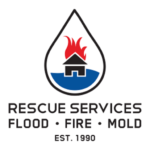
We’ve all seen pictures of people mobbing stores during a storm warning, empty shelves that contained bottled water, toilet paper and canned goods – and these occurrences on Kauai are totally unnecessary. We live on an island with a history of hurricanes, and hurricane preparation should be something we do once each year; being prepared gives us confidence that no matter what happens, we are ready. The last thing we need is the stress of waiting in long lines at Costco, or fighting over the last case of canned soup. The anxiety of a coming storm is enough to deal with, without adding panic created by a last minute shopping frenzy.
Bottled water is the first item on most people’s shopping lists, but on an island with limited refuse and recycling capabilities we should avoid buying cases of water; it is expensive, wasteful, and bulky to store. Five gallon collapsible water containers are inexpensive and long-lasting, and can be used at the beach and on camping trips as well. They collapse into a size that even the smallest ohana apartment can store until needed. Filling them before a storm, along with pots, pans, and your bathtub will provide as much water as needed at a fraction of the cost and waste, and can be reused many times.
Keep a small stock of canned goods for emergency, but only items that your family usually eats, which means purchasing these in advance to avoid being sold out and buying items you may not like out of panic. Do not buy frozen or perishable foods at the last minute, chances are great that you will not have power and your food will spoil almost immediately. When all danger of a hurricane has passed, be sure to consume these items before the expiration date and replace them before the next storm warning. The last place you want to be before a storm is in the grocery store.
Items you may want to consider buying, prior to a storm, are full propane cylinders to keep your household appliances or camping stove powered, sheet plastic or tarps, a high quality flash light and extra batteries, and a jump pack with 110 inverter to run a string of lights (charging the pack prior to the storm). The jump pack is another item that can be used in everyday life for both starting your car if your battery fails, or powering lights in your tent (or your keiki’s iPads) on camping trips.
If a hurricane is imminent, and you are otherwise prepared, removing the screens from your windows is something many don’t think to do. After a big storm, wind will be nonexistent and mosquitos will be plentiful; storing your screens in a safe location allows you to replace them afterward, even if your windows have shattered, ensuring a more comfortable, bug-free home during recovery.
During the last hurricane threat, Home Depot sold out of generators very quickly. Every brand was purchased because the choice of the best products was gone. Having a generator is a good idea if you have a business to run or a large family, but buying the appropriate generator in advance is important. Imagine that you’ve survived a storm and are working all day to make repairs and get back to your normal life – but your generator was cheap and puts out 100 decibels of sound – the equivalent to a jackhammer, the garbage truck, a motorcycle, or a lawnmower, 24 hours a day, right outside your house. Not only will this impair your peace of mind during the dark hours, but you are likely to cause your nearest neighbors to become angry. With a little bit of research and advance planning, you can find a quiet generator at the same price as a loud one, and spend your nights slumbering restfully while your appliances run. Check out this article for more information to help you decide which brand to purchase if you need a generator.
To shop locally for generators or jump packs, try Toolmaster in Lihue, Kawamura Farm Enterprises in Lihue, or Kauai Marine and Mower in Kapaa.
Finally, to be fully prepared for the hurricane season, know your homeowners insurance policy, what it covers, and your deductibles. Contact your insurance agent, or call The Professionals – we have dealt with every insurance agency on the island and can help you decipher anything you don’t understand.
The Professionals – Rescue Services is here to help you in any emergency – from hurricane cleanup to a wet floor from a broken water line to smoke mitigation from a fire, and so much more. If you encounter any situation that calls for non-medical emergency service and don’t know who to call – call us at 808-246-0405 – 24/7. We are here to help the entire island of Kauai.

Aloha!
Most homeowners discuss roofing, painting or carpets when they are thinking about the upkeep of their houses or condos – but how often do you think about your dryer ducts and vents?
When lint builds up in the dryer or exhaust duct, it can block the flow of air and cause excessive heat build-up. When this happens, it not only lowers dryer performance, costs more to run, and increases wear and tear, but also puts the appliance at risk of catching fire. Dryer lint is highly flammable and causes hundreds of house fires each year.
To prevent this, dryer vents must be cleaned regularly – The National Fire Protection Association Standard 211 suggests dryers and ducts be cleaned once each year, while vents and hoses inspected for blockages every six months.
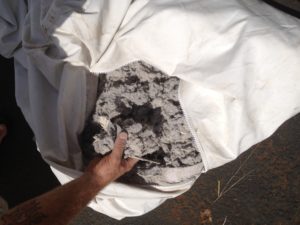
Is it time to have your dryer vent cleaned? Here are some warning signs:
Contact The Professionals Kauai to schedule a cleaning to protect your family and home.
808-246-0405 Office
808-652-555 Emergency 24/7
Have questions? Feel free to call us about anything related to your home, insurance, water or fire damage, mold – we’re here for you!
We treat every project as if it were our own home. Our family run business has been helping Kauai residents and businesses for over 27 years. We respond quickly and provide effective solutions as well as proactive measures that can help you avoid larger costly disasters in the future. For reliable damage restoration service to your home or business on Kauai, HI, call the professionals at Rescue Services, a locally owned and operated company. Serving Kauai for over 25 Years!
Aloha!
I’m composing a test blog to see if our subscribers receive it.
Please leave a comment and let me know!
M

The Pacific hurricane season started on May 15th, and we at Rescue Services encourage our Family and Friends to start preparing, if you haven’t already.
As the premier water and storm mitigation company on Kauai for over 25 years, too often we see homeowners find out the limitations of their homeowners, hurricane or flood insurance policy after the damage has been done.
Here are some things you may not know:
-Everything is not covered – it varies from policy to policy, but is never 100%.
-Hurricane policies have high deductibles that many of us are not prepared for.
-The NFIP (flood) policy is extremely limited (something that we know from personal experience in 2012).
-You need both dwelling and personal property coverage (most do not have personal property coverage) and there are separate deductibles for both.
-Flood personal property coverage is actual cash value (ACV) only.
During the next few weeks, we would suggest scheduling a sit down with your insurance agent for a discussion regarding your insurance coverage. Prepare for the deductibles, know your coverages so the insurance adjuster does not break your heart explaining the limitations of coverage and deductibles after the fact.
If you have any questions or concerns, please call, email or private message us. We’re happy to help where we can.
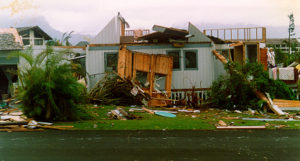
1. Know your coverages.
Check to see if you have hurricane deductible and flood insurance. Named storm and hurricane deductibles typically run 2% to 5% of the insured property value. If your home has an insured value of $250,000 with a 2% deductible, you would pay $5,000 out of pocket before your insurance company makes payment on the claim. Flood damage resulting from heavy rain or storm surge is excluded from most policies. Typically there is a 30-day waiting period before a flood insurance policy takes effect.
2. Check your property for obvious hazards.
Look for hanging limbs, loose shingles, unsecured children’s play equipment, that broken garage window you’ve been meaning to patch since winter. In a hurricane, these things can become projectiles and cause damage.
3. Locate copies of your important documents and store off site.
In case of emergency evacuation, you’ll want to have copies of your important documents such as your social security cards, birth certificates and banking information. Also include a copy of your policy and any information about how and where to file a claim for damages. Hard copies kept in a separate location, files backed-up on a secure internet site or a jump drive loaded with these documents can all ensure that you have the paperwork you need, when you need it.
4. Update your home inventory.
In the event of a loss, creating an inventory can be the biggest headache of all. Information such as purchase dates as well as receipts and photographs of your things can help when it’s time to make a claim for damages.
You can use the NAIC home inventory app to get started.
5. Stock supplies for before and after the storm.
Everyone knows that Spam and water are the first things to disappear in a grocery store immediately before a storm here in Hawaii, but don’t wait until a storm strikes to purchase basic repair supplies. Keep things like tarps, plywood, hammers and zip ties on hand for temporary repairs after a storm.
6. Keep your contact information up to date with your insurance provider and your agent.
Having your up-to-date contact information, and in some situations the contact information of a third party out of state if you evacuate, can help make any claims run smoothly. Your insurance company should make every effort to contact you with necessary information, but it is ultimately your responsibility to keep your contact information updated and to read and address all communication sent to you.
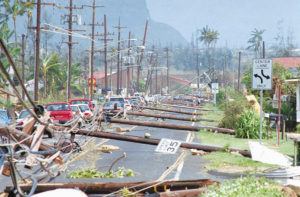
We are here to help anytime you need us.
Wishing you a safe season,
The Professionals – Rescue Services
808-652-5555 (emergency 24/7)
808-246-0405 (office)
Copyright © Rescue Services. All rights reserved.